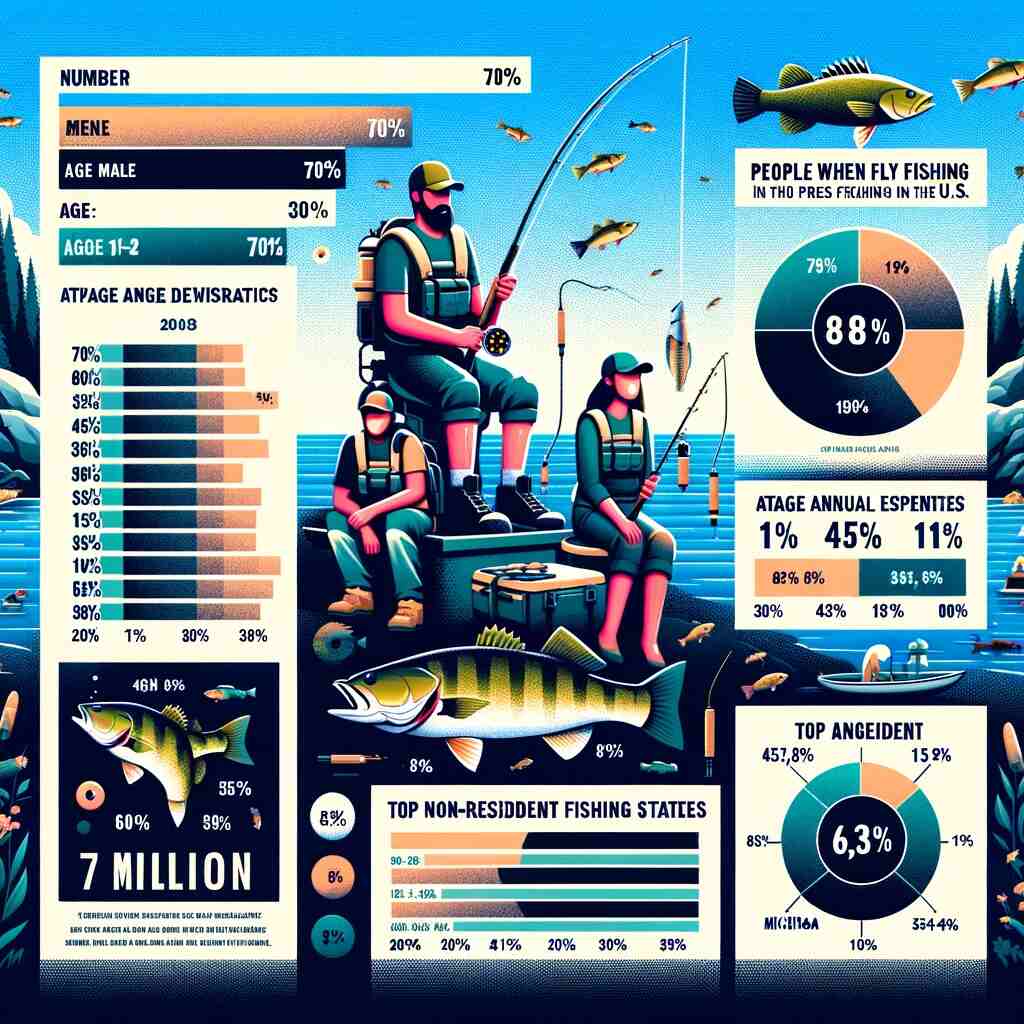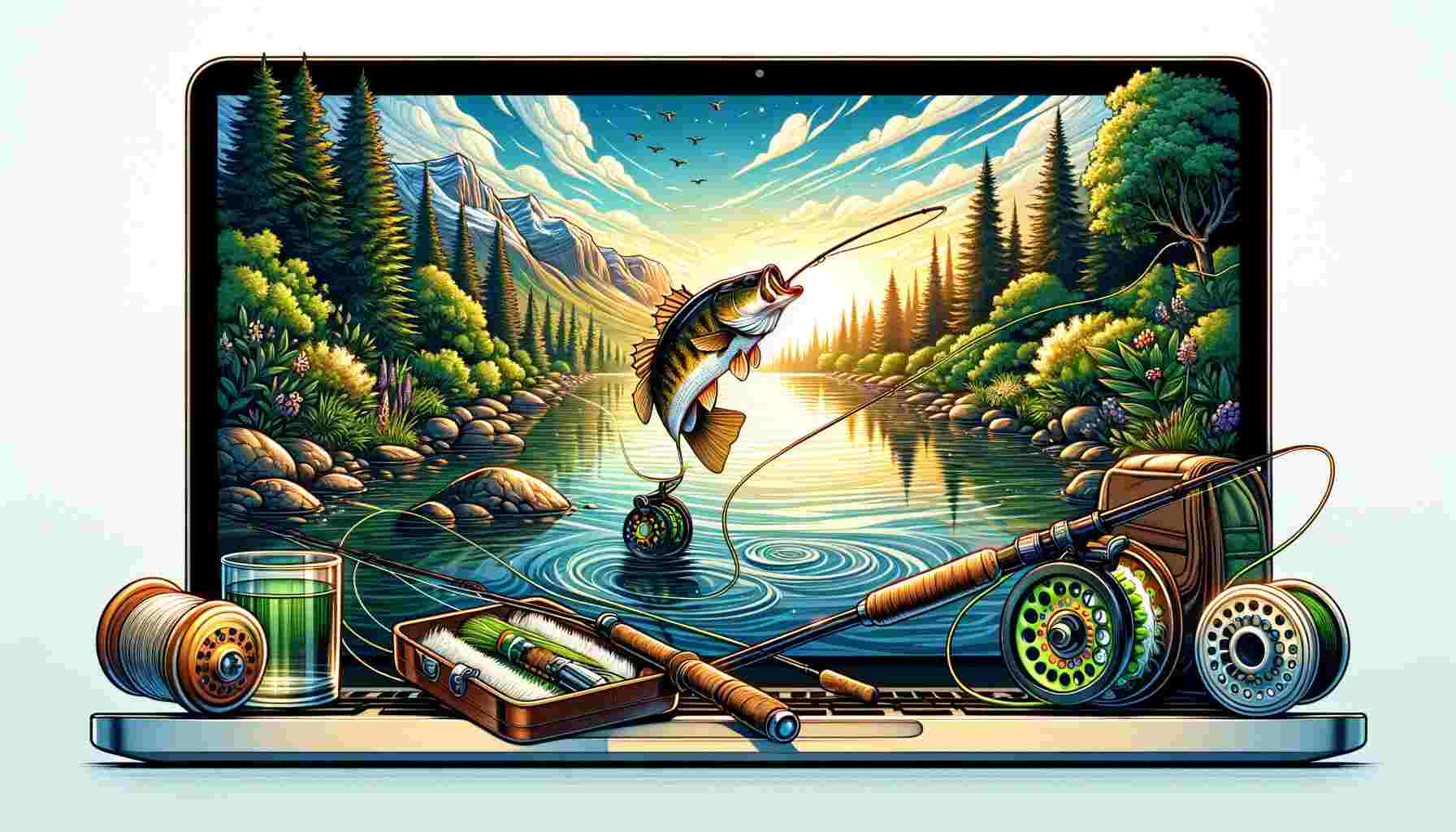In the fast-paced rhythm of modern life, finding solace and relaxation is crucial for mental and physical well-being. Among the myriad of activities that offer this peace, fly fishing for bass stands out as not just a hobby, but a therapeutic journey.
This article delves into the therapeutic benefits of this activity, supported by expert insights and personal stories, and offers a guide for those interested in embarking on this fulfilling adventure.
The Therapeutic Benefits of Fly Fishing
Fly fishing, especially for bass, is recognized for its therapeutic qualities. The rhythmic motion of casting, the focus required in lure selection and placement, and the serene natural settings contribute to its mental health benefits. Experts suggest that such outdoor activities can significantly reduce stress and improve mental clarity. The peaceful environments where fly fishing is often practiced serve as a natural escape from the hustle and bustle of daily life, providing a sense of calm and mindfulness.
Understanding Bass and their Environment
Bass behavior varies with seasons, affecting fishing strategies. In spring, they’re aggressive and less picky, ideal for beginners. Summer brings an abundance of food, making topwater fishing thrilling. Fall sees bass feeding actively in preparation for winter, while winter fishing is slower, requiring patience and skill. Knowing these patterns enhances the fishing experience, making it both a challenging and rewarding endeavor.
Gear and Techniques for Success
Essential gear for bass fly fishing includes the right rod, reel, line weight, and selection of flies like poppers, streamers, and weighted flies. Each tool and technique has its specific use, depending on the environment and bass behavior. Understanding and mastering these tools not only increases the chances of a good catch but also adds depth to the fishing experience, making it more engaging and satisfying.
To excel in bass fly fishing, equipping yourself with the right gear is vital. Here are some recommendations for each essential piece of equipment:
1. Fly Rods for Bass Fishing
- Fast Action Rods: Ideal for longer casts and windy conditions. Look for rods in the 6 to 8 weight range. Brands like Orvis and Sage offer high-quality fast-action rods suitable for bass fishing.
- Rod Length: A 9-foot rod is generally versatile for various bass fishing scenarios.
2. Fly Reels
- Large Arbor Reels: These reels provide quicker line retrieval and better line management. Look for reels with a good drag system to handle the powerful runs of bass. Brands like Redington and Lamson have reliable options.
- Backing Capacity: Ensure the reel has enough backing capacity (at least 100 yards of 20-pound test).
3. Fly Lines
- Weight-Forward Floating Line: This is versatile for most bass fishing scenarios. It’s ideal for topwater and shallow subsurface flies.
- Sink-Tip Lines: Useful for getting flies deeper in the water column, especially in deeper lakes or during warmer months when bass go deeper.
Our Top Pick is the RIO Products Bass Fly Line, which is specifically designed for bass fishing. It features a weight-forward design and is known for its durability and ability to cast larger flies, which is essential for bass fishing.
4. Flies
- Poppers and Surface Flies: Great for exciting topwater action during early mornings or late evenings.
- Streamers: Mimic baitfish and are effective for covering a lot of water. Patterns like Woolly Buggers or Clouser Minnows are popular.
- Weighted Flies: Useful for fishing in deeper waters or heavy cover. Look for weedless designs to avoid snags.
5. Leaders and Tippets
- Leader Length: A 7.5 to 9-foot leader is usually sufficient. The leader should match the fly line weight.
- Tippet Strength: For bass, a 0X to 3X tippet can handle their size and aggressive strikes.
6. Additional Gear
- Waders and Boots: Essential for river and stream fishing. Ensure they are comfortable and durable.
- Polarized Sunglasses: Improve visibility in the water and protect your eyes.
- Fishing Vest or Pack: To keep your gear organized and easily accessible.
7. Learning Resources
- Books and DVDs: Consider resources like “Fly Fishing for Bass Handbook” by Lefty Kreh for in-depth techniques and tips.
- Online Tutorials: Websites like YouTube have numerous tutorials for both beginners and advanced anglers.
Remember, while having the right gear is important, spending time on the water and practicing your techniques is equally crucial to becoming proficient in bass fly fishing.
Fishing in Lakes and Rivers
Different environments require different approaches. Lakes demand attention to structure and seasonal patterns, while river fishing is best when the water level is falling, focusing on areas with current. Adapting to these environments not only improves catch rates but also deepens the angler’s connection with nature, enhancing the therapeutic benefits of the activity.
Personal Stories of Healing
Numerous individuals have found peace and healing in fly fishing for bass. Their stories often reflect a journey from stress or turmoil to tranquility and joy, emphasizing the activity’s power to heal and rejuvenate.
1. Story of Dan Nelson: Dan Nelson, who was coping with Stage 4 brain cancer, experienced a significant moment of relief and joy while participating in a Reel Recovery fly fishing retreat. This experience, captured by Trout Unlimited, illustrates the therapeutic potential of fly fishing, especially for individuals dealing with serious health challenges.
2. Kevin McKay and His Stepdaughter: Kevin McKay, an outdoors contributor, shared how fly fishing became a therapeutic escape for him during winter, his most challenging season. Recognizing the potential benefits, he introduced his stepdaughter Emma to fly fishing when she faced anxiety and depression during college. The experience not only provided her with relief but also helped her regain confidence and find joy during a difficult phase of her life.
3. Ian and Sylvia’s Journey: Ian, discussing his experience in the Fly Fisherman article, turned to fly fishing as a means to fill the void left by substance abuse. The sport’s complexity and immersion captivated him and helped him find a fulfilling and soul-satisfying activity. His mother, Sylvia, also found fly fishing to be a lifesaver in her recovery journey, teaching her patience, forgiveness, and appreciation for her surroundings. Their shared passion for fly fishing strengthened their relationship and played a crucial role in their recovery.
These stories demonstrate how fly fishing can serve as a powerful tool for healing, offering not just a pastime but a path to recovery, self-discovery, and deeper familial bonds. The calmness of the environment, the focus required in the activity, and the sense of achievement in mastering a skill all contribute to its therapeutic effects.

Fly Fishing for Bass Statistic: Trends and Demographics in Focus
Fly fishing, particularly for bass, is more than just a pastime—it’s a vibrant and growing segment of the outdoor sports industry. Recent statistics shed light on the increasing popularity of this serene yet challenging sport. From the surge in the number of fly fishing enthusiasts to the significant economic impact and the evolving demographics of the participants, the world of fly fishing is expanding and diversifying in remarkable ways.
Let’s delve into some of these enlightening statistics that illustrate the dynamic world of bass fly fishing.
1. Popularity and Participation
The fly fishing industry, including bass fishing, has seen a significant rise in participation. From 2018 to 2019, the number of people who went fly fishing in the United States grew by 100,000, reaching around 7 million. This growth indicates a rising interest in the sport.
2. Fishing Demographics
The demographic profile of anglers in the United States is diverse, with a notable presence of female anglers and a range of age groups participating in the sport. The fastest-growing demographic among fly anglers is Hispanic, showing a broadening appeal of the activity across different communities.
3. Economic Impact
The bass fishing industry has a significant economic footprint. For example, the average angler spends over $1,400 annually on fuel, hotel rooms, and restaurant meals related to bass fishing. This expenditure contributes substantially to local economies and supports various industries.
4. Fishing Frequency and Locations
A considerable portion of Americans (52%) report fishing from the shoreline, and many anglers choose to fish between 4-11 times over the course of a year. Florida is recognized as the top state for non-resident fishing destinations, followed by Michigan and Wisconsin, indicating popular locations for bass fishing enthusiasts.
5. Conservation and Environmental Impact
The bass fishing industry contributes significantly to conservation efforts. For instance, sportfishing tackle excise taxes have generated hundreds of millions in revenues, which are used for fisheries and conservation funding. This highlights the role of anglers in supporting environmental sustainability.
These statistics not only illustrate the popularity and economic importance of bass fly fishing but also underscore the diverse demographic that enjoys this sport.
Tips for Beginners and Safety
For those new to the sport, understanding basic techniques and safety is crucial. Beginners are advised to start in familiar waters and gradually experiment with different techniques and gear. Safety considerations, including the use of appropriate equipment and awareness of the environment, are paramount.
If you’re a beginner I recommend you read this other article: Start Fly Fishing: Essential Beginner Fly Fishing Setup
The Future of Fly Fishing for Bass
Fly fishing for bass is not just a sport; it’s a form of therapy, a way to connect with nature, and a journey towards personal well-being. Its growing popularity signals a collective desire for activities that offer respite from our hectic lives. As more people discover its benefits, fly fishing for bass is poised to become not just a pastime but a pathway to wellness.




